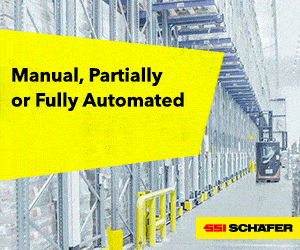The transitional return to work is thankfully on – but companies still face the challenge of maintaining social distancing guidelines while preserving business productivity.
Many have managed to scale operations responsively and keep up with demand during the pandemic, however post Covid-19 businesses will all have to implement measures that further prioritise and guarantee employee and customer health and safety.
Advanced cloud-based WMS technology, such as SnapFulfil, has been at the heart of this ‘adaptive’ approach to an unprecedented attack on global supply chain operations, so here are our top three tips for maximising likely new world logistics, while safely abiding by social distancing guidelines.
1. Optimal Control: Maintaining control of available workflow will be a primary focus and SnapFulfil allows for the releasing of orders and tasks by different criteria options – like when to distribute work by specific requirements, ensuring that work with the highest priority is completed first, plus controlling the volume of available tasks and the resource numbers needed to complete them.
2. Configuration options: how operations interact with health and safety guidelines can be highly personalised, with staff and resources allocated in such a way as to reduce congestion and maintain social distancing guidelines. Warehouse managers can easily stagger and distribute workload and resources – and there are four avenues specifically where SnapFulfil configures to allow for optimisation and flexibility as business demands change:
a) Zoning –as a company incorporates new operational procedures, warehouses can be sectioned into functional zones to allow for the segregation of workflow and operator footprint. Consequently, rather than picking and dropping off at a single point, multiple drop offs allow for efficient zone-to-zone passing of carts.
b) Tasking -a bespoke rule engine configures work to be segregated by task type, which reduces the volume and resource allocation required in each area of the warehouse at any given time. It flexibly adjusts too, based on predetermined criteria, while efficiently completing tasks.
c) User Permissions –these can be altered on an ad-hoc basis, so that users can be granted permissions for specific tasks and only be allocated to those task types, etc. This allows control over the assignment of work and the number of active warehouse staff in one area at any given time.
d) Rules -tailored and evolving congestion rules help manage the distribution of footprint across aisles or zones continuously. This helps prevent an overload of employees in any area of the warehouse, while optimization of best practices through specific rules allows for concurrent work without limiting overall operational activity.
3. Limit User Licenses: SnapFulfil operates on predetermined concurrent user licenses, but these can simply be amended to reduce the number of workers logged onto the system and active in the warehouse. This will ease congestion without exceeding the maximum number of operatives in a work setting – plus with the concurrent licensing model, extending operating hours while reducing employees onsite per shift doesn’t increase the cost.
As we enter the next phase of Covid-19 – where warehouse labour is already scarce and in what will quickly become a differently regulated or defined industry – creating and maintaining a safe and healthy work environment has never been more critical.
So, rest assured, a best-of-breed WMS like SnapFulfil is specifically designed with features that are easily and quickly configured and provide ongoing flexibility and control to the warehouses of our imminent future – whatever they will look like?












